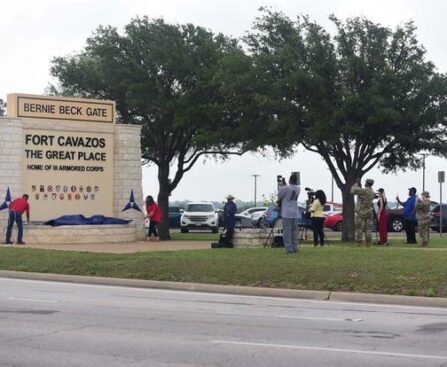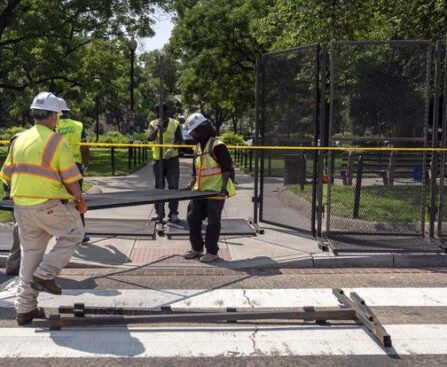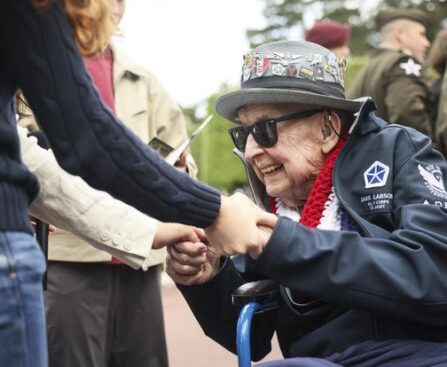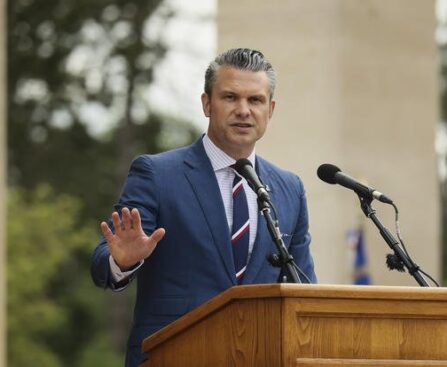WASHINGTON — President Donald Trump wants to counter the threats drones pose to national security under new rules released Friday, while also aiming to make it easier for Americans to fly faster than the speed of sound and expedite the development of the flying cars of the future.The three executive orders will encourage the Federal Aviation Administration to expedite rules to allow companies to use drones beyond their operators’ line of sight, while also imposing restrictions meant to help protect against terrorism, espionage and public safety threats.Drones are already used in a variety of ways, including bolstering search and rescue operations, applying fertilizer, inspecting power lines and railroad bridges, and even delivering packages.But the war in Ukraine has highlighted how drones could be used in a military or terrorist attack — a concern as the World Cup and Olympics approach in the U.S. There also have been espionage cases where drones have been used to surveil sensitive sites. And White House officials said drones are being used to smuggle drugs over the border, and there are concerns about the potential for a disastrous collision between a drone and an airliner around an airport.“These orders also address the growing threat of criminal, terrorist and foreign misuse of drones in U.S. airspace. We have a responsibility to protect and restore airspace sovereignty,” said Michael Kratsios, assistant to the president and director of the White House office of Science and Technology Policy.Moving to protect the U.S. from the increasing threat of drones With major events like the World Cup scheduled in the U.S. next year, Sebastian Gorka, senior director for counterterrorism on the National Security Council, said it’s crucial to protect the airspace above large public events. A federal task force will be created to review drone threats and existing terrorism task forces will look at drones.“Drones are a disruptive technology. They have an amazing potential for both good and ill,” Gorka said. “We will increase the enforcement of current laws to deter two types of individuals: evildoers and idiots — the clueless and the careless.”The orders direct the FAA to expedite a new rule restricting drone flights over sensitive sites and work with the Departments of Justice and Homeland Security to better enforce laws on illegal drone use.The FAA has been testing systems to detect and counter drones that the White House would like to expand to deal with threats to public safety and national security. Among the methods being examined: Using radio signals to jam drones or force them to land. Authorities are weighing whether to deploy high-powered microwaves or laser beams to disable the devices.The order will allow state and local authorities to be trained to respond to unauthorized drones and expand the government’s ability to counter them. Law enforcement agencies also may receive additional training on how to use drones themselves to ensure safety around major events.Trump aims to clear the way for supersonic flights and flying cars One of Trump’s orders directs the FAA to eliminate the 1973 speed restriction that prohibits flights over Mach 1 and replace it with a noise standard.New technology in supersonic aircraft can allow the planes to fly faster than the speed of sound without a disruptive sonic boom being heard on the ground, but the regulations still ban those flights over land. A plane developed by Boom Supersonic became the first independently funded jet to break the sound barrier this year.“The reality is that Americans should be able to fly from New York to LA in under four hours,” Kratsios said. “Advances in aerospace engineering, material science and noise reduction now make overland supersonic flight not just possible, but safe, sustainable and commercially viable.”Blake Scholl, founder and CEO of Boom Supersonic, said a renaissance in supersonic passenger travel is made inevitable with the repeal of the ban.“We’re grateful to President Trump for his leadership — this important step allows us to accelerate development of our Overture supersonic airliner,” Scholl said.Several companies are also developing flying cars for use as taxis and delivering cargo. They are likely still at least a couple years away from being ready, but orders are designed to remove regulatory barriers to their development.“Flying cars are not just for ‘The Jetsons.’” “They’re also for the American people,” Kratsios said.Concerns grow in the U.S. about Chinese drones The executive orders don’t ban Chinese-made drones, including those by DJI that are popular in the U.S., but the Trump administration said it will prioritize American-made drones in federal procurement programs and open up grants to help state and local first responders buy U.S. drones.The White House said it would seek to reduce the U.S. reliance on foreign-made drones and restrict foreign devices in sensitive areas.“This executive order marks a long-overdue investment in drone deterrence,” said Craig Singleton, a senior China fellow at the Washington-based think tank Foundation for Defense of Democracies. “Drone warfare isn’t a future threat — it’s already here.”The administration also is mandating national security reviews of some Chinese drone makers. That “underscores that drone supply chains … are now national security flashpoints,” Singleton said.The orders also tighten rules on wireless transmission tech, which Singleton said would disrupt the ability by Chinese drones to transmit data back to Beijing.States and the federal government are increasingly wary about Chinese technology, and at least six states have passed laws to restrict government purchases of Chinese drones because of concerns about spying.That’s part of a slew of more than 240 anti-China measures state legislatures have considered this year. Congress has also banned federal agencies from acquiring Chinese drones, with some exceptions.But most commercial drones sold in the United States are made in China, and many Americans have come to rely on them. The Chinese models are widely known for their high performance and are generally significantly cheaper than American-made drones.Expanding the range of drones outside users’ field of vision The FAA has generally prohibited drones from operating outside operators’ line of sight because of safety concerns, but the agency has granted hundreds of waivers to Amazon and some other companies, including utilities and railroads, to use drones farther away.Drone manufacturers and users have long wanted rules that spell out the framework for such flights because they see that as a natural next step to unlock the technology’s potential. The head of the trade advocacy group Association for Uncrewed Vehicle Systems International, or AUVSI, testified to Congress this week that the FAA missed a deadline for approving such rules last year.On Friday, Michael Robbins, chief executive officer of AUVSI, applauded the Trump administration for advancing policies that he said would ensure U.S. leadership in drone innovation, security, operation and manufacturing.He called it “a historic day for the drone industry in the United States.”___Funk reported from Omaha, Nebraska. Associated Press writer Leah Askarinam contributed from Washington.
Story Continues
© Copyright 2025 Associated Press. All rights reserved. This material may not be published, broadcast, rewritten or redistributed.








